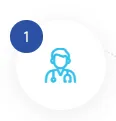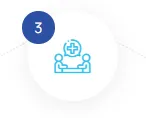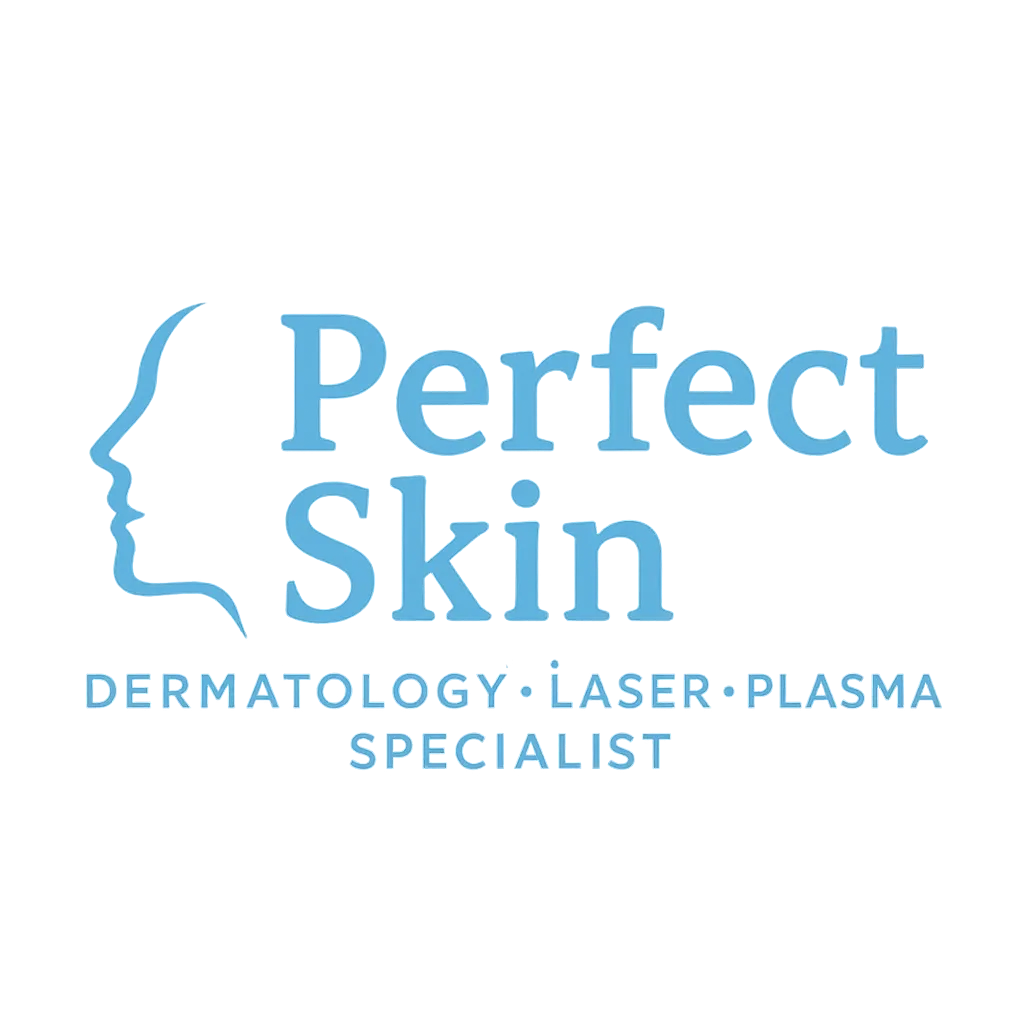Frequently Asked Questions
What Skin services do you offer?
We offer a wide range of services, including acne treatment, anti-aging solutions, skin cancer screenings, laser therapy, and personalized skincare consultations to address all your skin needs.
How do I know which treatment is right for me?
Our expert dermatologists provide personalized consultations to assess your skin concerns and recommend the most suitable treatments based on your unique skin type and goals.
Are your treatments safe for all skin types?
Yes, all of our treatments are carefully designed to be safe and effective for a variety of skin types, including sensitive skin. We take great care in customizing each treatment plan for optimal results.
How long will it take to see results?
The time it takes to see visible results depends on the treatment and your skin condition. For some services like acne treatments, improvements may be seen in a few weeks, while other treatments may take longer.
What is plasma skin tightening?
Plasma fibroblast therapy uses a handheld pen that ionises atmospheric gas to create a tiny electrical arc. The micro‑flash causes controlled micro‑injuries in the epidermis and stimulates fibroblast cells in the dermis. This heat triggers collagen and elastin production, leading to skin tightening and improved texture. It is often performed on delicate areas such as eyelids, neck, or fine lines.
Who is suitable for plasma fibroblast treatment?
It can be used on fair to medium skin types (Fitzpatrick I–III). A patch test is recommended for darker skin types (IV and above) due to risk of hyperpigmentation. Good candidates are individuals with mild to moderate skin laxity, hooded eyelids, superficial lines, or stretch marks who prefer a non‑surgical option. Those who are pregnant, breastfeeding, on isotretinoin, or with systemic conditions, heavy scarring disorders, pacemakers, or active infections should not have this treatment.
What are the benefits?
Plasma therapy provides high precision, no bleeding, and less tissue damage. It forms a protective micro‑crust that heals quickly, causing minimal downtime. Benefits include tightening of skin folds (such as eyelids), smoothing fine lines, reducing pigmentation, and mild scar improvement. The procedure typically requires only topical anaesthesia and can return to daily activities almost immediately.
What are the risks and recovery like?
Following treatment, small brown carbon crusts form at each treatment point and fall off after 5–7 days. The area may swell for a day or two. It is important not to pick the scabs, avoid sun exposure, keep the area clean, and not apply makeup until healed. Potential risks include hyperpigmentation, burns, infection, or scarring. Always go to a qualified professional with plenty of experience.
How long do results last?
Results vary but often last 1–3 years depending on skin type, age, and lifestyle. The treatment stimulates your own collagen, so improvements continue over several months. Maintenance sessions can prolong results.
What is CO₂ laser resurfacing?
CO₂ laser resurfacing is a medical‑grade treatment that uses carbon‑dioxide laser energy to vaporize micro‑columns of damaged skin and stimulate collagen remodelling. In full‑ablative mode it removes the entire top layer, whereas fractional modes create tiny columns of ablation surrounded by intact skin, which speeds healing and reduces downtime[1]. The treatment is most effective for fairer skin types (Fitzpatrick I–II) because darker skin has more melanocytes and higher risk of post‑inflammatory pigmentation[2].
Who is a good candidate for CO₂ laser?
Ideal candidates are women or men over 30 with fair to medium complexions who want to improve wrinkles, sun damage, rough texture, acne or surgical scars, or skin laxity. Candidates should have a moderate pain tolerance and be able to devote 10–14 days to social downtime and aftercare[3]. CO₂ lasers are not recommended for people with very dark skin tones, active acne, deep infections, or recent isotretinoin use; they may trigger scarring or hyperpigmentation[4]. Pregnant or breastfeeding women should avoid it.
What conditions can CO₂ lasers treat?
This treatment addresses fine to deep wrinkles, sunspots, uneven skin tone, enlarged pores, moderate skin laxity, acne scars, some surgical scars, and stretch marks. Because it stimulates collagen and elastin, it can slightly tighten skin and soften lines and scars[5]. Deep rolling or ice‑pick scars may need additional treatments; active acne or deep infections should be resolved before laser therapy.
What results can I expect?
Clinical studies show significant improvement in wrinkles, texture, and pigmentation. A review of fractional CO₂ lasers reported a 54 % improvement in periorbital wrinkles one month after treatment; at three months there was a 34 % reduction in wrinkles and a 47 % improvement in skin texture[1]. Pigmentation improved by 51–75 %, and roughness and wrinkles improved by 25–50 %[6]. Patients treated with micro‑ablative CO₂ devices rated results as “excellent” (75 %) or “good” (25 %), with the effect lasting 6–9 months[7]. Another clinic reports that most patients perceive a 50–75 % improvement in wrinkles and overall tone after healing[8]. For hand rejuvenation, mean improvements were 48.3 % in wrinkling, 53.3 % in pigmentation, and 54.9 % overall[9]. In acne‑scar studies, 43.3 % of patients achieved more than 50 % improvement after 3–4 sessions[10], while in traumatic/burn scars, 60 % of patients saw an excellent response and 24 % a good response[11]. Results continue to improve for up to six months as collagen regenerates.
How many sessions are required?
Full‑face CO₂ laser resurfacing is usually a single session, but more severe scarring or deeper wrinkles may need 2–3 treatments spaced several months apart. Fractional modes often require multiple sessions to achieve comparable results but offer shorter downtimes.
What is the treatment and recovery like?
The procedure lasts 30–90 minutes depending on the area. Topical anaesthetic to keep you comfortable. You may feel heat or stinging. Afterwards, expect redness, swelling, and oozing; a protective crust forms in the first few days. Social downtime typically lasts 7–14 days, followed by pinkness that may persist for several weeks. Strict aftercare includes gentle cleansing, occlusive ointments, moisturising, and daily high‑SPF sunscreen. Avoid makeup until the skin has healed. Follow your provider’s instructions closely.
What are the risks and contraindications?
Common side effects are redness, swelling, crusting, itching, and temporary hyperpigmentation. Rare but serious risks include infection, scarring, prolonged erythema, milia, or permanent pigmentation changes. People with darker skin or a history of keloids are at higher risk. The treatment is not suitable during pregnancy or breastfeeding, for those on isotretinoin, or for people with active infections, uncontrolled diabetes, autoimmune disorders, or poor wound healing.
Key benefits at a glance:
• Deep wrinkle reduction and smoothing of fine lines
• Improved skin tone and pigmentation
• Reduction of acne and surgical scars
• Slight tightening due to collagen stimulation
• Long‑lasting results (months to years) after one or few treatments
How We Work Process

Book a Call
Book a Call With Us
Enjoy a 15-minute online consultation via Zoom, where a member of our expert team will connect with you to discuss your skin concerns, goals, and the best treatment options for you.

In Clinic Consultation
Professional Skin Consultation (30 Minutes)
With Patch Test Provided if Needed

Define Requirements
Tell Us Your Skin Goals – Let’s Create Your Personalised Treatment Plan
We’re here to support you every step of the way. Share what you’d like to improve or achieve, and we’ll design a bespoke skin journey tailored to your unique needs and desired results.

In Clinic Treatment Time
Reignite Your Skin’s Natural Glow
Your time with us is all about transformation, care, and results.



